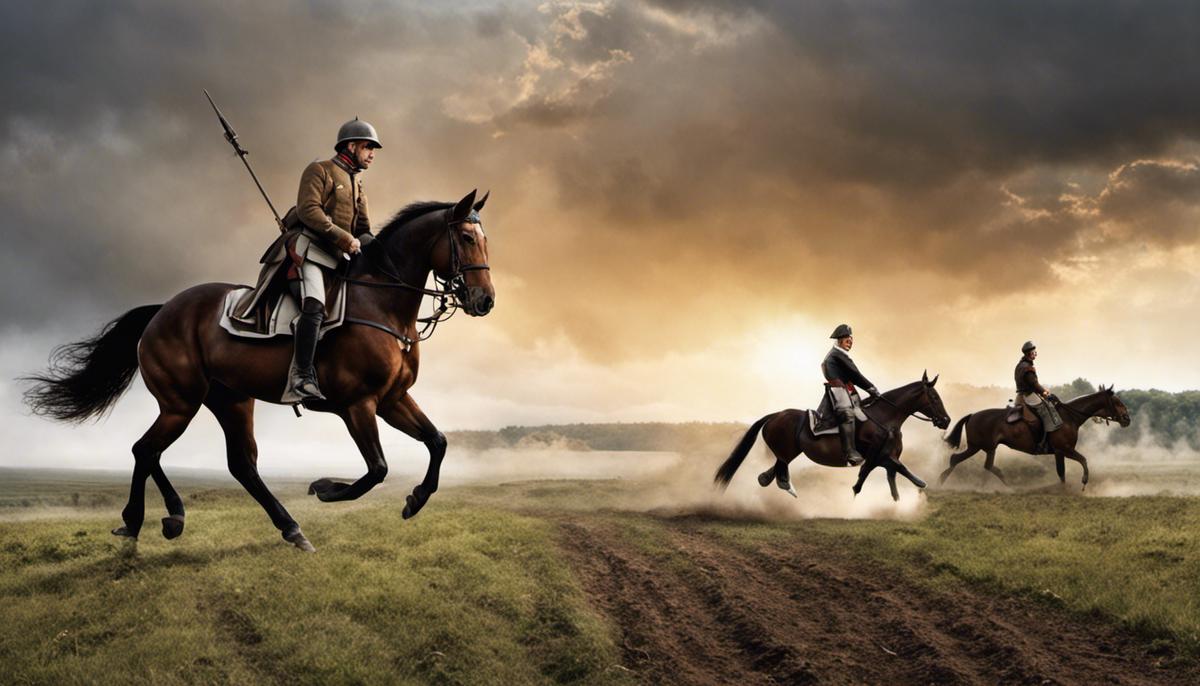With origins tracing back to the 19th century in Hungary, the distinguished and alluring Nonius horse breed has left indelible hoof prints in the annals of equestrian history. Rugged and resilient, these horses bore witness and played significant roles in major historical watershed moments, including the turbulent times of World War II. Countless generations have marveled at the Nonius horse’s remarkable physical traits, from their impressive stature to their powerful build and distinct appearance. Today, Nonius horses continue to capture the hearts of equestrian enthusiasts worldwide, not only for their heritage and history but for their admirable attributes and abilities that allow them to excel in modern equestrian sports. Along with recognizing their sporting abilities, it is equally important to acknowledge the ongoing efforts by dedicated individuals and organizations worldwide to conserve and promote this breed through responsible and sustainable breeding programs.
Table of Contents (Horspedia)
Origins and History of Nonius Horses
Origins of Nonius Horses
Nonius horses originated in Hungary during the late 18th and early 19th centuries, a period of active horse breeding in the country. The breed was named after its founder, a horse called Nonius Senior, brought to Hungary by Count József Hunyady for the Imperial Stud in Méra in 1816. Nonius Senior was an Anglo-Norman stallion, and his offspring were bred with local mares, giving birth to the unique Nonius lineage.
Development of the Nonius Breed
The Nonius breed was developed and refined at the Hungarian State Stud in Mezőhegyes, an institution established in 1784 by the Habsburg monarchy. The initial breeding goal was to produce a multifunctional horse suitable for both agricultural work and military use. Over the years, the breed was consistently selected for its traits of strength, resilience, and endurance. These uniquely versatile horses were robust enough to perform heavy farm work during peacetime and switch to cavalry and artillery duties during times of war.
Role in World War II
The Nonius breed played an important role during the World War II period. They served as war horses due to their exceptional strength and stamina. As these were traits highly required on the battlefield, significant numbers of Nonius horses were taken to the front lines. The breed suffered greatly during this period, with many horses lost to war while others were scattered across Europe.
The Revival and Transformation of the Nonius Horse Post War
Following World War II, the Nonius horse population in Hungary experienced a severe dip. However, comprehensive efforts were channeled into revitalizing the breed. The remaining Nonius horses were collected, and planned breeding efforts were amplified. The Mezőhegyes stud farm played a significant part in this rejuvenation endeavour, such that by the closing decades of the 20th century, the Nonius breed was thankfully pulled out of the endangered status.
In the passing years, the Nonius horse’s duties have adapted from their initial ones. As warfare and modern farming embraced machinery, these horses uncovered a fresh niche in equestrian sports and leisurely riding. Nowadays, Nonius horses are a favored pick for dressage, eventing, and pleasure riding. Their docile yet steadfast disposition, coupled with their remarkable strength and tenacity, makes them perfect companions for both novices and seasoned riders. In addition to this, their mild temperament grants them a significant role in therapeutic riding programs.
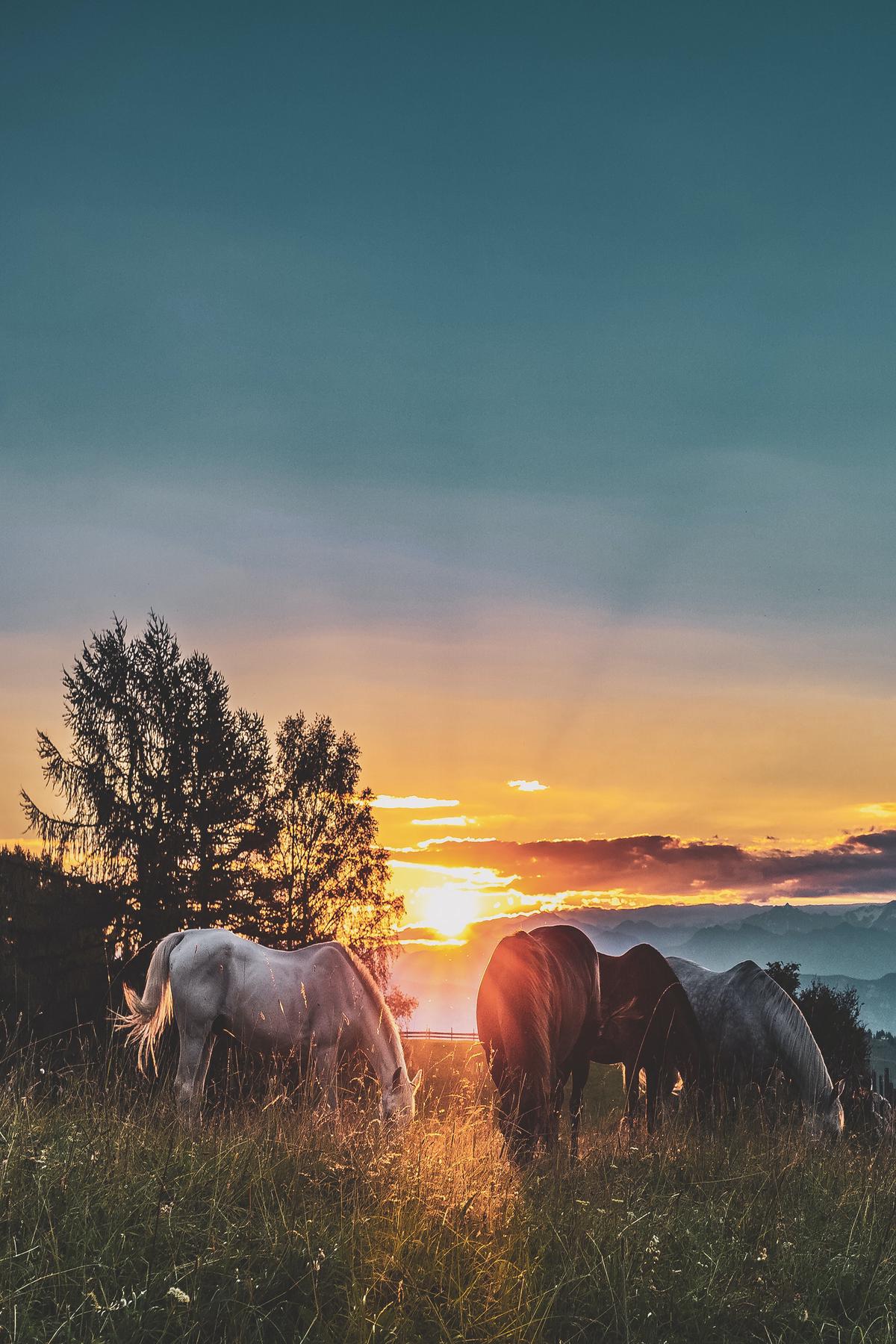
Photo by eberhardgross on Unsplash
Physical Characteristics and Traits of Nonius Horses
Distinctive Physical Traits of Nonius Horses
The Nonius horses are recognized for their sturdy and unique appearance. They’re known for their heavy-built physique directed by a large head with a straight or convex profile, akin to a Roman nose. These captivating horses also portray small, bright eyes and long, flexible ears. Typically, male Nonius horses stand between 15.2 and 16.2 hands tall (around 62 to 66 inches), whereas their female counterparts measure about 15 hands (approximately 60 inches) tall.
The body of a Nonius horse showcases a deep chest and wide, muscular shoulders. In addition, they possess a short, sturdy back, and a slightly slanting croup. Their legs are sturdy, supported by tough, durable hooves. Weight-wise, Nonius horses usually range from 1,300 to 1,500 pounds, reinforcing their robust stature.
In terms of coat color, Nonius horses typically sport dark hues ranging from bay to black, although the chestnut coat is not uncommon. Notably, these horses are equipped with a thick mane and tail that are typically darker than their coat’s color.
Understanding the Characteristics and Temperament of Nonius Horses
Understanding the characteristics of Nonius horses begins with their composed, compliant, and mild manner. These versatile animals are highly adaptable, durable, and possess impressive stamina, enabling them to thrive in diverse climates and fulfill a variety of tasks. Originally bred for agricultural work, military purposes, and pulling vehicles, Nonius horses are known to be hardworking.
Their amiable temperament, alongside their strong physical attributes, makes them an excellent choice for beginner riders or those with less experience. Distinguished for their faithfulness and dedication to work, Nonius horses are a popular choice for equestrian activities like riding, cart driving, and animal-assisted therapy.
Unique to the breed is their ability to maintain a consistent weight and robust health while requiring surprisingly minimal sustenance. This hardiness can be traced back to their roots of enduring severe conditions. Their resilience and low-maintenance nature make them highly sought-after in equestrian circles.
Despite their muscular physique, Nonius horses are not regarded for their speed. Instead, these horses are remarkable for their endurance and adaptability. Noted for their longevity, Nonius horses often live longer than many other breeds, a feature attributed to careful Hungarian breeding practices aimed at creating an all-around, indefatigable horse.
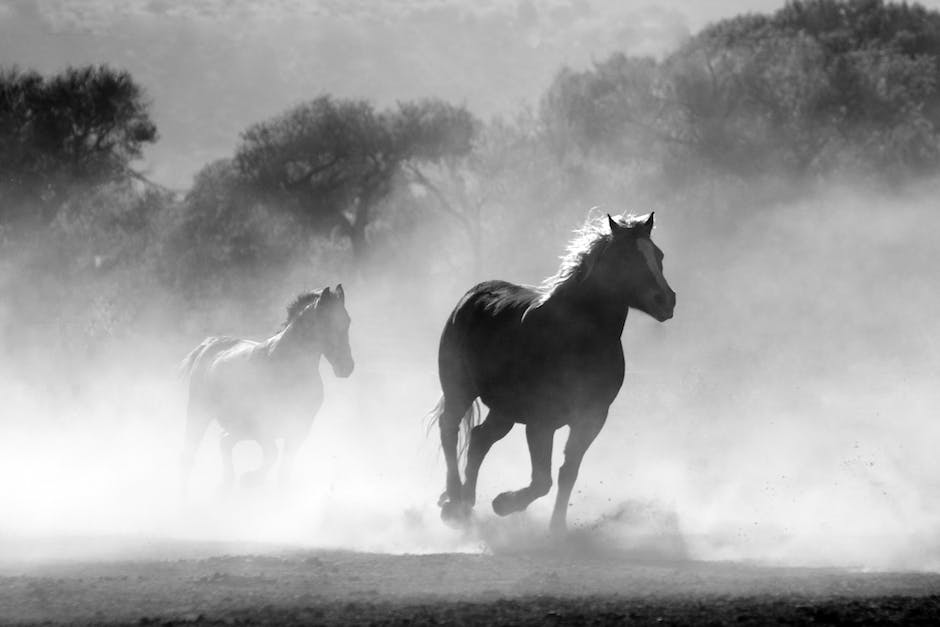
The Nonius Horse in Modern Equestrian Sports
The Role of Nonius Horses in Equestrian Sports
Nonius horses play significant roles in equestrian competitions and exhibitions worldwide. With their powerful build and extraordinary stamina, they are predisposed to succeed in many equestrian disciplines. Disciplines that emphasize endurance and perseverance, such as dressage and carriage driving, particularly showcase the skills and abilities of this robust breed.
Physical Attributes
The general build of a Nonius horse is robust with a sizable head, a broad neck, and a tough body structure with strong legs. These physical attributes enable the Nonius to accommodate the demands of rigorous physical activities such as high-energy equestrian sports. Despite these attributes, Nonius horses also have a reputation for maintaining a calm and patient temperament, making them well-suited to disciplines requiring a combination of physical prowess and mental focus.
Dressage and Carriage Driving
In dressage, a discipline of highly controlled movements and techniques, the Nonius horse’s physical strength and mental concentration prove to be invaluable assets. Similarly, in carriage driving, their notable stamina and muscular endurance are essential for success.
Notable Nonius Horses
A few Nonius horses have achieved notability in the world of equestrian sports. A prominent example is Eposz, a Nonius gelding who was a successful dressage competitor on the international level. Eposz was renowned for his elegant movements and athletic prowess, demonstrating the potential for excellence in Nonius horses in high-level equestrian sports.
Breed’s Role in Modern Equestrian Sports
Due to their rare combination of strength, stamina, and temperament, Nonius horses continue to be popular choices for a variety of equestrian activities. Beyond dressage and carriage driving, the versatility of the Nonius breed extends to other disciplines as well. Nonius horses are also used in eventing, a discipline that combines the control of dressage with the speed and agility needed for cross-country and showjumping phases.
Nonius Horses’ Adaptability
Their strong genetic lineage and remarkable adaptability enable Nonius horses to thrive in different equestrian sports environments. Despite the physical demands of these disciplines, Nonius horses, with their outstanding stamina and capability, prove time and again that they can compete with other breeds in these intense sports.
The Nonius horse breed, with its remarkable strength, endurance, and calm demeanor, has carved a notable niche in modern equestrian sports. Their commendable attributes have significantly contributed to disciplines like dressage and carriage riding, emphasizing the breed’s extraordinary versatility. Indeed, in the realm of equestrian sports, the Nonius horse stands out due its remarkable qualities.
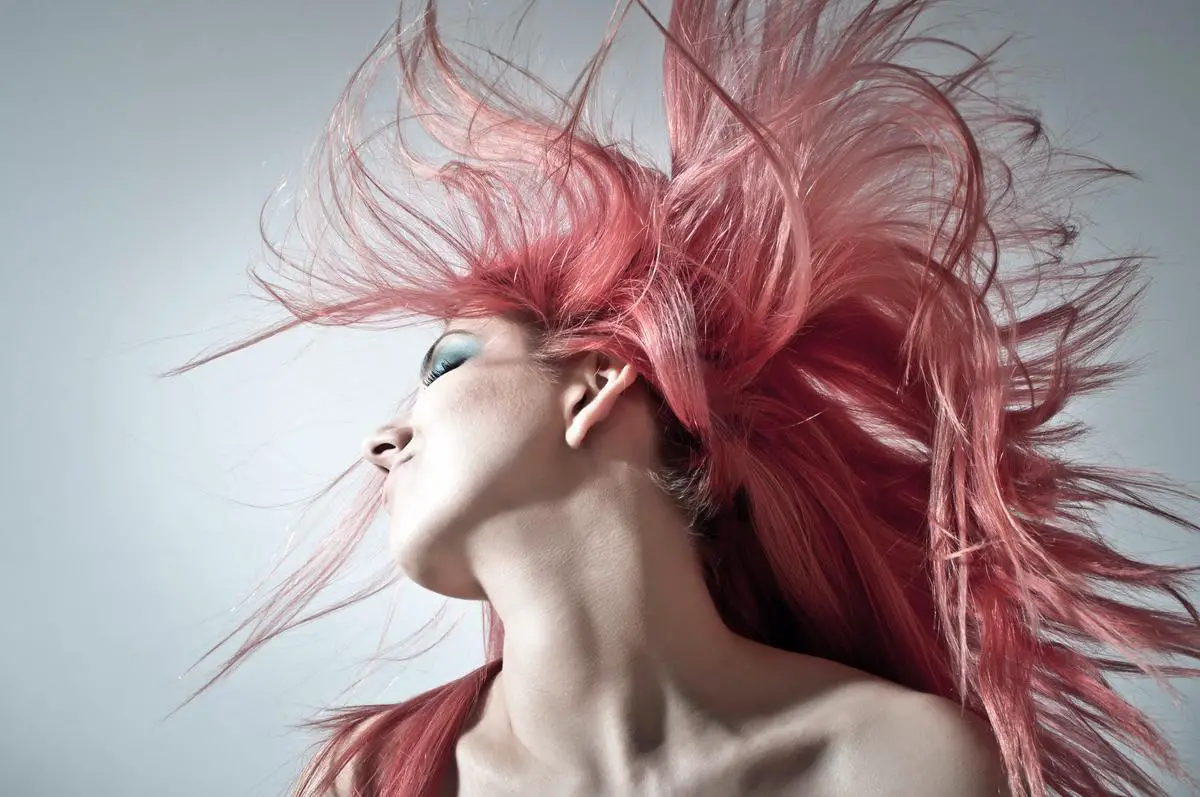
Conservation and Breeding Programs of Nonius Horses
The Vulnerable Status of the Nonius Horse
With roots tracing back to the late 19th century, the Nonius horses originated from Hungary and Romania and were named after the Nonius stallion, their progenitor. The breed, revered for its formidable strength, impressive endurance, and superior adaptability, makes for an ideal fit for activities like trail riding, dressage, and carriage driving. Regrettably, the Nonius horse is on the brink of extinction, with the global population dwindling to less than 500 mature individuals. Historical events, agricultural developments, and fluctuating demands in horse markets are primarily responsible for the breed’s stunning scarcity.
State of Conservation Efforts
Efforts to conserve the Nonius breed are being spearheaded by several organizations. In Hungary, for instance, the National Association of Hungarian Horse Breeders plays a critical role in the preservation and promotion of indigenous Hungarian horse breeds, including the Nonius.
In addition, the Nonius Horse Breeders’ Association of Romania (ANNCNOR) has sought to preserve the breed and promote sustainable horse breeding practices among its members. They register and track horses’ pedigrees, maintain selective breeding programs, and provide resources and support for breeders.
Meanwhile, in Serbia, the equine research and development center, Lipik Stud, has also focused on the preservation of the Nonius breed through its breeding and research programs.
Significant Breeding Programs
Recognition of the Nonius breed’s intrinsic value has led to the implementation of significant breeding programs. The Hungarian State maintains the breed register and oversees the breeding program. State-owned studs such as Mezohegyes and Babolna are key players in these efforts. The Mezohegyes State Stud has the largest community of Nonius horses in Hungary and has initiated responsible breeding programs to conserve the breed.
In Serbia, Lipik Stud maintains a sizeable herd of Nonius horses and has established selective breeding practices to preserve the breed’s characteristics and genetic diversity.
Efforts for Sustainability and Preservation
The primary goal of these breeding and conservation programs is sustainability, aiming to maintain the genetic diversity of the Nonius breed while increasing their numbers. Breeding programs guarded by rigorous standards safeguard the lineage of these horses and assure future generations will maintain the breed’s defining characteristics.
Various initiatives are also implemented to increase public awareness of this rare breed. These include horse shows, public riding programs, and educational programs that promote the importance of biodiversity and conservation. Moreover, Nonius horses play vital roles in preserving cultural heritage and traditional rural lifestyle, contributing to the sustainable development of the regions where they are kept.
Overall Conservation and Breeding Efforts
The conservation and breeding programs for Nonius horses demonstrate a concerted international effort to preserve this rare breed for future generations. While there is still much work to be done, these efforts played a significant role in preventing the extinction of the Nonius breed so far.
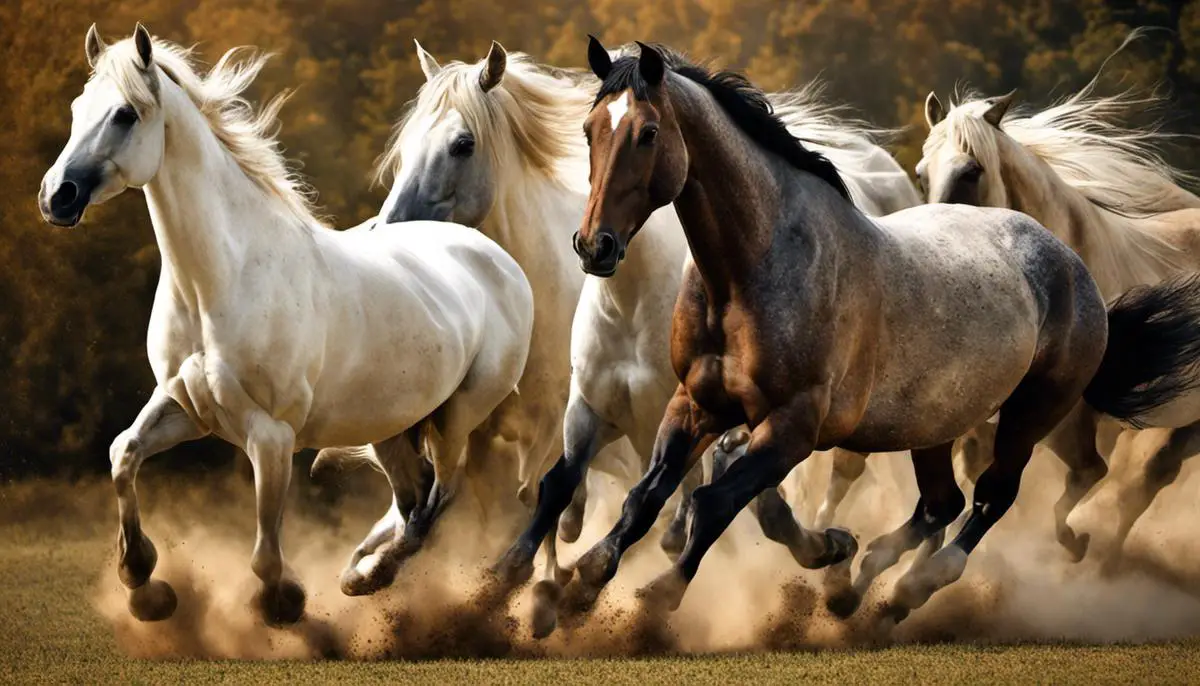
Nonius horses embody a rich tapestry of stories – from the bracing plains of Hungary, where they first originated, to the army stables of global wars, and the shining spotlight of prestigious equestrian events. These horses epitomize resilience and tenacity, virtues that have seen them through tumultuous times and have endeared them to individuals who recognize, appreciate, and strive to preserve their unique essence. Amidst the evolution of equestrian sports, the faithful Nonius breed has proven to be indispensable, demonstrating versatility in various disciplines. As many rally behind continuing the preservation efforts for the Nonius horse through meticulous breeding programs, this remarkable breed carries a legacy that dances on the edge of extinction but strives onward nonetheless. And so, the tale of the Nonius horse teaches humanity a profound lesson in resilience, survival, and the unwavering spirit that connects both equine and man.
